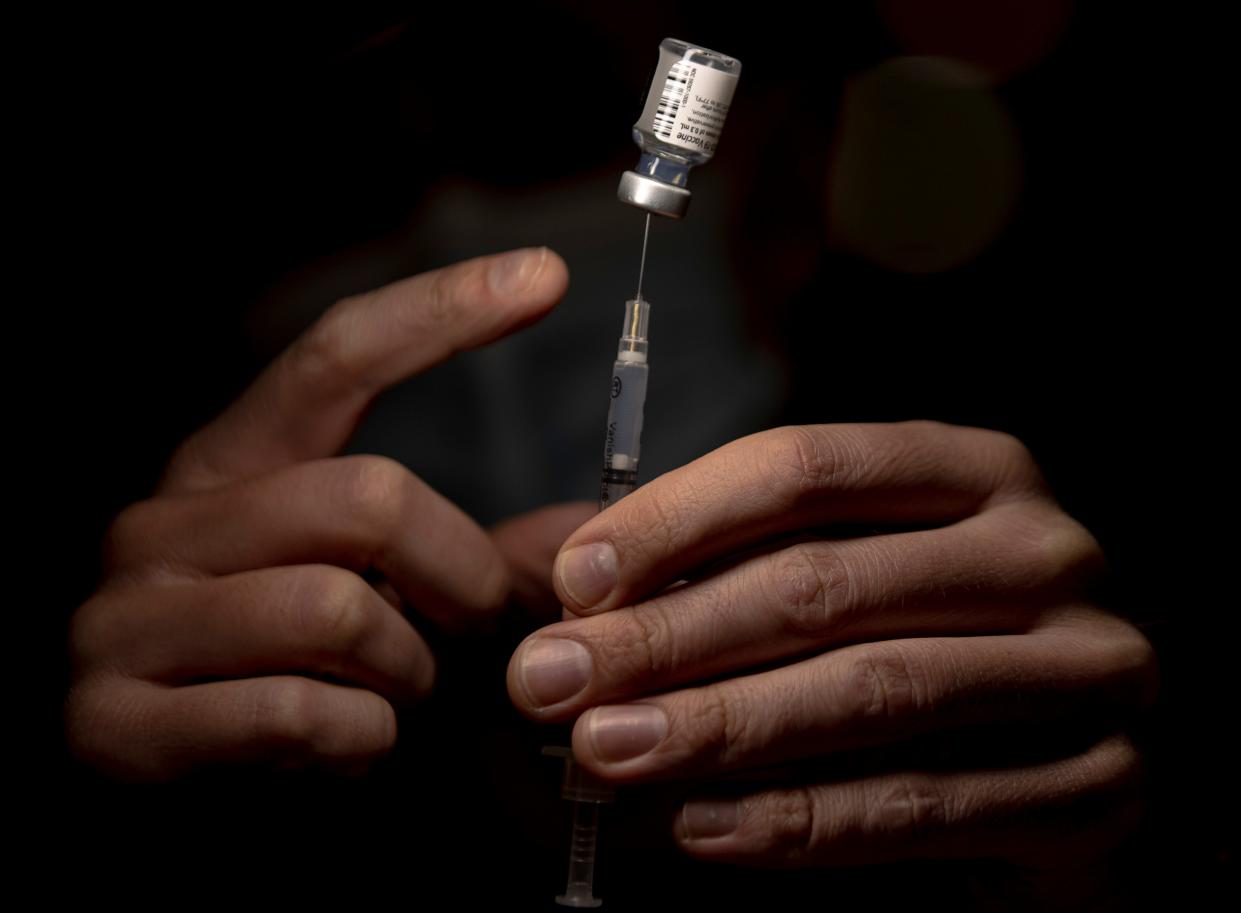Oregon coronavirus update: BA.4, BA.5 variants cause increasing cases, hospitalizations

Around this time last year, Oregon was on the precipice of the delta variant wave, which over the next few months would become the most deadly period for the state throughout the pandemic.
No strain of the virus has yet come close to matching delta's proclivity for causing severe illness and death, particularly among individuals who at the time were unvaccinated.
This week, new subvariants of the COVID-19 omicron variant — known as BA.4 and BA.5 — have emerged as the predominant strains in the United States, according to the Centers for Disease Control and Prevention. BA.5 represents approximately 54% of current cases, while BA.4 is around 17%.
BA.2.12.1, which had for weeks been the dominate strain, now represents about 27% of cases.
The Oregon Health Authority says that while the data does not yet reflect it, BA.4 and BA.5 are likely causing the majority of cases in Oregon as well.
However, while OHA said the two new subvariants do appear to be about 10% more transmissible than previous omicron subvariants, there is no indication thus far they are causing more severe illness or more deaths. This could be due to the strains themselves or the current high levels of immunity from COVID-19 from vaccination, previous infection or both.
The symptoms also largely mirror those of previous variants, which include cough, fatigue, headache and muscle pains.
New COVID-19 forecasting released by Oregon Health and Science University on Thursday predicts hospitalizations will rise slightly from current levels in part due to the new strains, peaking at around 480 hospitalizations on July 12.
"Due to the high prevalence of infections and low hospitalization rate per infection, a significant share of hospitalizations are expected to be incidental," the forecast notes.
Here's what COVID-19 is doing in Oregon right now:
Current case, hospitalization trends
Hospitals in Oregon are currently treating 423 patients with COVID-19, the highest number since early March. Of those, 59 are in intensive care unit beds, about 10% of the state's ICU beds. That's more than double last week's rate of ICU beds filled by coronavirus patients.
Peak hospitalizations occurred during last summer's delta wave, topping out at just shy of 1,200 patients.
According to OHA data, Oregon has averaged around 1,700 new cases of COVID-19 per day since mid-May, which is remaining steady so far.
However, public health officials have noted for months raw case data is not considered the best metric to track COVID-19 infection trends due to the prevalence of at-home tests and how rarely those results are reported to the state. True case counts could be between four and 10 times higher than reported, they said.
Better metrics include hospitalization trends and test positivity rate. During the two-week period of June 12 to June 25, test positivity was 13.6%, up from 12.3% in the previous two-week period. Data from last week shows test positivity rates approaching 16%, an increase associated with the BA.4 and BA.5 variants.
By comparison, during the omicron wave this winter, test positivity rates peaked at 25%.
Deaths have averaged less than five per day since the beginning of June, but OHSU forecasting also expects that to increase as BA.4 and BA.5 continue to spread.
Vaccination rates
Public health authorities note that vaccination remains the best way to prevent severe illness or death from the coronavirus, even while the vaccine's effectiveness at preventing infection has waned.
According to OHA data, 76.9% of adults in Oregon are fully vaccinated. Around 47% of Oregonians have received a booster shot.
Vaccines are available for anyone six months of age and older.
Masks recommendations
According to data updated by the CDC on Thursday, people in 14 Oregon counties are considered to be at high risk for COVID-19 infection and should resume mask-wearing indoors in public and on public transportation.
These counties include the tri-county area around Portland, and counties along the eastern and southern portions of the state. Marion and Polk counties are considered to be at medium risk.
"High risk" counties have had 200 or more new COVID-19 cases per 100,000 people in the last seven days, or they’ve had more than 20 new COVID-19 hospital admissions per 100,000 people within a seven-day period.
Masking is only recommended in high-risk counties.
OHA advises Oregonians to move events or gatherings outdoors as much as possible.
Reporter Connor Radnovich covers the Oregon Legislature and state government. Contact him at cradnovich@statesmanjournal.com or 503-508-6131, or follow him on Twitter at @CDRadnovich.
This article originally appeared on Salem Statesman Journal: BA.4, BA.5 variants cause increasing cases, hospitalizations

